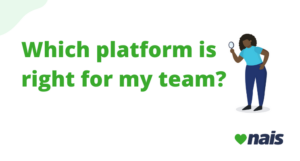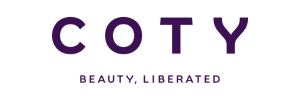One year into the pandemic, what has COVID taught managers about employee appreciation? Here are the key lessons that have shown success on workforce motivation that will define leadership in the future.
If you’re looking to be a leader or working directly with leaders, then this article will define:
- The three lessons managers have learnt about employee appreciation
- Tips for future employee management.
You will leave this article knowing successful management techniques, highly effective in the VUCA world.
It’s safe to say, the last year has required adaptation. From personal wellbeing, social adjustments, and especially to our work behaviour and rituals. The pandemic has required employees to work from home, change their social networking dynamics and strengthen their interpersonal work relationships via digital technology.
The success of an organisation has largely depended on adaptation, communication with employees, and empathy.
The three biggest leadership takeaways from the pandemic.
1. Let’s talk.
It’s safe to say that managers have learnt the importance of talking, reporting and listening to their employees. This has been a fundamental lesson: communication is the building block for success.
The key is… Constant, clear, and two-way communication.
The ability to cooperate, strategise and present, lies in the ability you, as a manager and leader, have effectively communicated.
Ask yourself:
How often do I talk with my employees?
How often do I check up on them?
Have I trained employees to communicate remotely? Have I given them the tools?
Do I have a plan in place to communicate changes in strategy?
How seamlessly you can build human communication through digital technology?
Have I learnt to adapt my body language via a screen signals?
Finally, have I shown employee appreciation remotely?
Companies that been able to communicate support and reliability for their employees, have mastered trust with their employees. Furthermore, not only does communication support employees, but it also leaves room for involving all employees in strategic changes. This builds value for the work of an employee, appreciation and builds a vision for the future of the business.
Inspirational communication and supportive communication come hand in hand to build employee confidence.
Communication has proven to be an essential piece to the health of a company and employee wellbeing. Doing constant pulse checks and making sure that everyone on the team is on the same page.

2. Adaptable workplaces are key.
The pandemic has restructured society, and along with it traditional work environments. Remote, cross-functional, and highly agile teams are those that have grown in success and adjusted to the pandemic.
The ability to adjust working routines and adapt to digital communication has been a leverage for teams to excel in pandemic times.
A study by Gartner has shown that 80% of leaders plan to introduce options for remote working after the pandemic. This is unsurprising, as a study by flexjobs show that 51% of employees say they are more productive from home due to fewer distractions and better time management.
Companies that have successfully moved their work process to remote or agile teams with high communication have been able to maintain productivity levels, and trends show agile work will be the most desired option, increasing in the future.
However, along with the ability to juggle working at home, I’m sure we have all experienced digital fatigue also known as “Zoomed out”. The new digital fatigue phenomena that kicks in between meetings. This demands attention. Managers need to understand their team’s stamina and respect quiet hours of working.
3. When working with humans, be human.
The pandemic has taken a toll on moral wellbeing and mental health. Therefore, it is normal for some days to be a bit harder than others.
Now, more than ever, it’s important to keep constant and quality communication with your employees. Consequently, consistent and compassionate communication is an action to show that you care for their wellbeing and appreciate them.
Start by choosing your preferred method of communication, is it Slack? Email? Zoom? Once you have established a communication channel that works for both sides, commit to a time. Schedule an hour of communication once a week / bimonthly/ monthly. The goal is to works to ensure that all their needs are met, and you have clear expectations.
Remember, as a leader you set a standard for your employees, lead by example and with kindness. Listen with compassion, understand for progress, and communicate with empathy.
However, let’s remember that there are always sunnier days ahead,
Finally, Covid 19 vaccines are on the horizon, testing centres have increased, and an overall less panic about COVID 19.
The final tips to conquer the last phase of the pandemic.
1. Survey employees to understand their overall health and well being. As a result, managers can act accordingly in case there is a problem, but it also leaves space for feedback and improvement.
2. Gift your employee’s food coupons to gather up on snacks whilst they are working away at home. Trust me, no one will say no to free snacks, no one.
3. Meet your employees one-on-one and build a relationship with them, be empathetic and willing to listen.
4. Once a month, turn the fun on! Create a fun- twist to the normal work routine. How about a zoom talent show? a theme party? Objective: Break the routine!
Finally, leaving the most important point for last.
5. Appreciate. Recognise, value and appreciate the work your employees are doing, one year into a global pandemic. Certainly, it hasn’t been easy, but they stuck with the company and dealt with the situation to the best of their ability. And that in itself is a huge accomplishment.
Do you want to learn how to become a successful leader? A leader that inspires, motivates and encourages? If your answer is “yes”, perfect! We have curated an appreciation Ebook from studies to enhance appreciation in your workforce.
Download it for free here.














